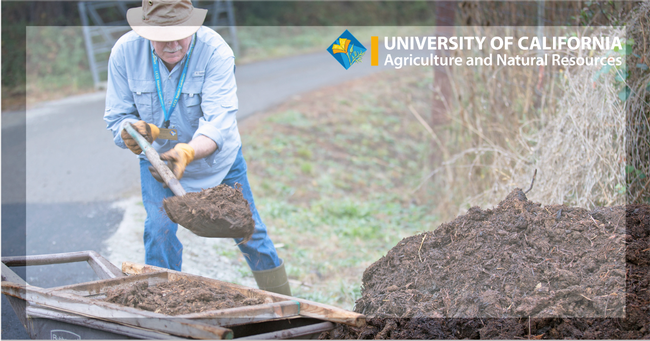- Author: Heidi Aufdermaur
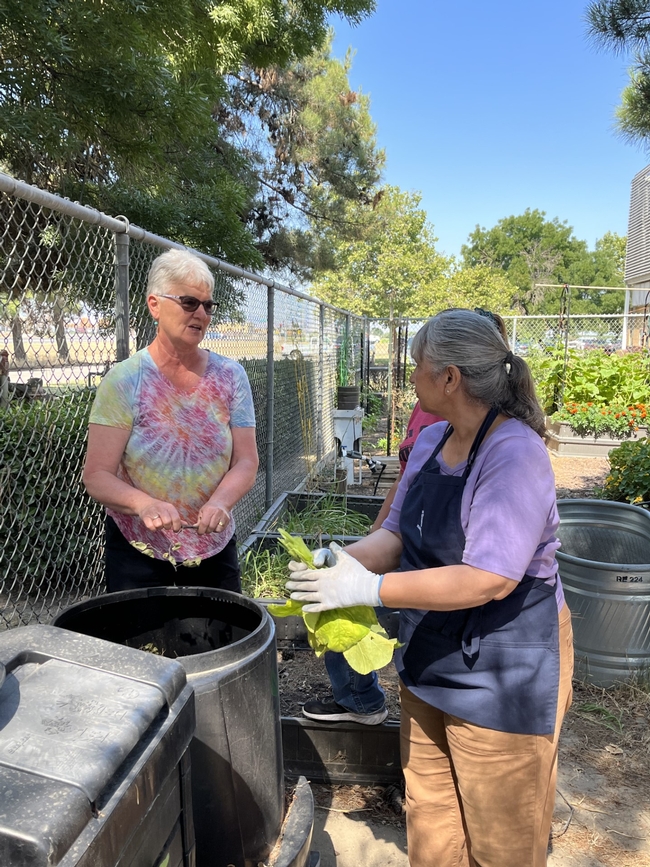
We wondered about that too! With this in mind, a group of UC Cooperative Extension Master Gardeners toured the City of Modesto's Compost Facility on 7001 Jennings Road.
Recently in California, there has been an emphasis on green waste collection. This was sparked from recent legislation, AB1383-short-lived climate pollutant reduction strategy--, which in simple terms is to “adopt regulations that achieve the specified targets for reducing organic waste in landfills.” Of course, there is much more to the legislation, but how does this relate to the ‘green cans?' Earlier legislation started the ball rolling, AB 939, AB341 and AB 1826 which focused more on commercial waste.
The main goal of this bill is to reduce the materials taken to our local landfills, which have ever-diminishing space. When organic materials are sent to the landfill, they create methane gas, toxic soup leachate, and hydrogen sulfide (rotten egg gas). Not only that, but homeowners are missing out on a great resource. This compostable material could be kept at home, providing environmental and gardening benefits!
Environmental benefits: Waste reduction, keeping soil fertile, improving air quality, water conservation. Gardening benefits: saves money, enriches soil, contributes to health lifestyle.
How can you benefit from using the green waste from your garden? Come learn more at our workshop. Even if you are already composting or want to learn how to best put that waste to use in your garden, come join us and see how much fun composting can be. We will also talk about vermicomposting and show you how to start your own container of green-waste-eating worms.
Registration Details:
Date: Saturday, September 9, 2023
Time: 9:00 a.m. - 12:00 p.m.
Where: Harvest Hall Rooms AB&C
Register: https://ucanr.edu/compost/2023
The workshop is free! However, if you'd like an 11 gallon compost bin to take home, you can make a $35 donation to our program (while supplies last). Children interested in learning about compost and worms are also welcome at this workshop!
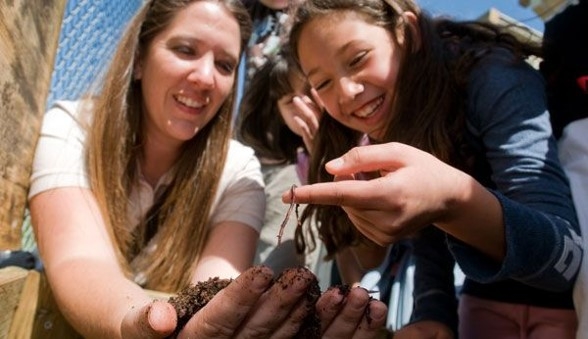
The UC Cooperative Extension Master Gardeners of Stanislaus County have taught adult classes at local libraries since April of 2022. Now, we are excited to present our Vermicomposting Class in June that will be fun for the WHOLE family!
Vermicomposting is the process of using red wiggler worms* to help eat kitchen scraps. Join us for this class to learn interesting facts about these worms, how to make your own “worm hotel,” and which foods the red wiggler worms eat that can help turn your kitchen scraps into compost for your garden!
In addition to presenting information about vermicomposting, you'll be able to “meet” a few live worms and see them in action in a worm bin. Kids of all ages will love "meeting" the worms, so be sure to bring them. We hope you can attend at one of these local Stanislaus County Library locations:
Vermicomposting Classes
Sat, 6/3 at 2:00 p.m. – Empire Library
Tues, 6/6 at 6:00 p.m. – Salida Library
Thurs, 6/8 at 1:00 p.m. – Patterson Library
Sat, 6/10 at 2:00 p.m. – Riverbank Library
Mon, 612 at 6:00 p.m. – Ceres Library
Tues, 6/13 at 6:00 p.m. – Oakdale Library
Mon, 6/26 at 5:30 p.m. – Modesto Library
Wed, 6/28 at 6:00 p.m. – Turlock Library
*earthworms don't like to be disturbed, so they are not used for vermicomposting.
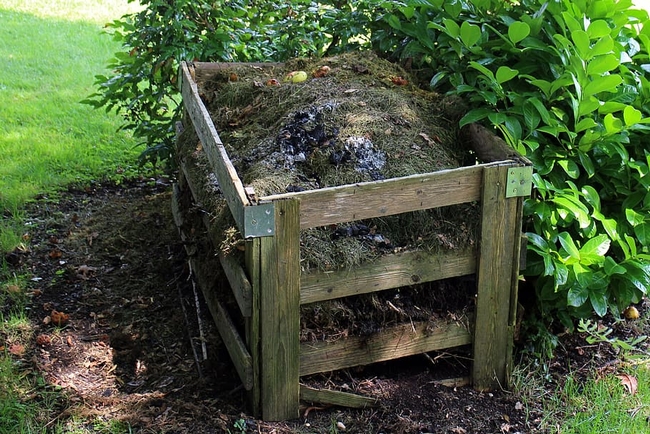
Stanislaus County Library Composting Classes
Tuesday, September 6, 2022 at 6:00 p.m. – Salida Library
Saturday, September 10, 2022 at 2:00 p.m. – Riverbank Library
Monday, September 12, 2022 at 6:00 p.m. – Ceres Library
Tuesday, September 20, 2022 at 6:00 p.m. – Oakdale Library
Monday, September 26, 2022 at 6:15 p.m. – Modesto Library
Wednesday, September 28, 2022 at 6:00 p.m. – Turlock Library
Stanislaus County Agricultural Center, Harvest Hall Composting Class
Tuesday, September 27, 2022 at 6:00 p.m. rooms D&E
Turlock Community Gardens
We taught composting at this location in spring, so this month we are offering vermicomposting, the fun and easy way to compost kitchen scraps using red wiggler worms. Children are welcome!
Saturday, September 17, 2022 at 9:00 a.m.
Patterson Library
We are offering a Fall Vegetable Gardening Class at the Patterson Library, in case you missed this class last month at other locations. Class is Wednesday, September 14, 2022 at 2:00 p.m. Composting will be taught at the Patterson Library on October 12 at 2:00 p.m.
Never miss a class, bookmark our online calendar: https://ucanr.edu/sites/stancountymg/Calendar/
- Author: Denise Godbout-Avant
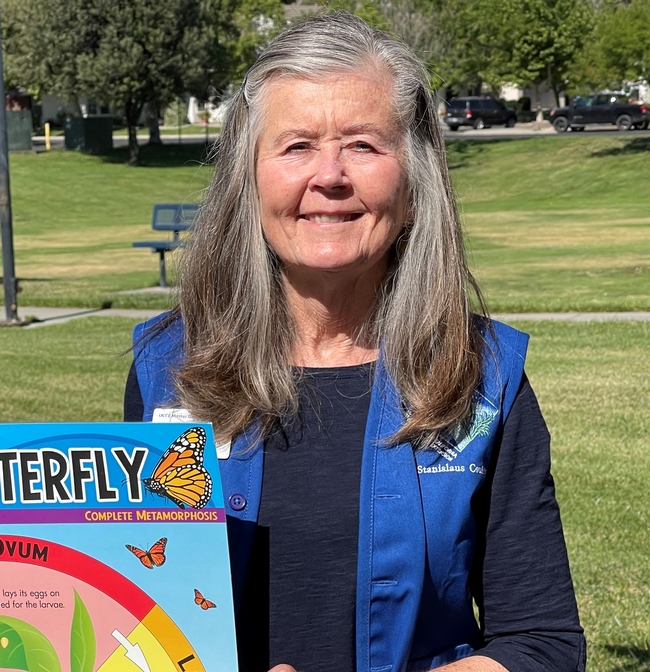
People often rake their leaves and put them out to be picked up as trash. I have always preferred to leave the leaves for my garden.
If you take a walk in a forest, you'll see leaf layers several inches deep around trees and bushes. Fallen leaves have a complex relationship with trees and nature, providing many benefits which can be reproduced to some extent in our gardens.
Natural Mulch
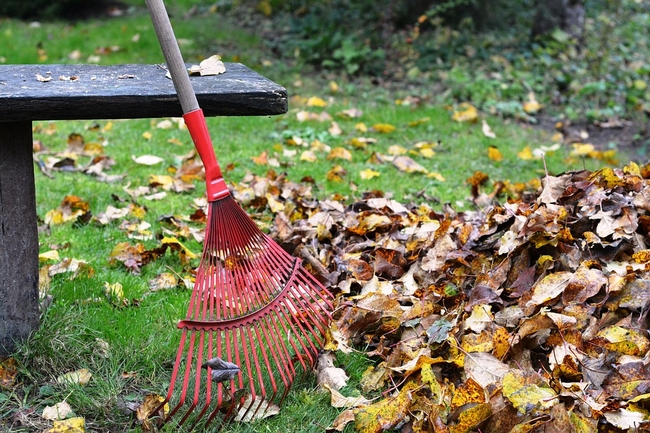
Fallen leaves have the same weed suppression and moisture retention properties of shredded wood mulch—and they're free! Where mulch is desired as a decorative element, what could be more seasonally appropriate than a pile of brightly colored fall leaves? This natural mulch also provides insulating winter cover from cold temperatures for roots, seeds, and bulbs.
A Web of Life in Leaf Litter
Leaf litter isn't just free fertilizer and mulch. It provides food and shelter for a wide variety of living things including spiders, snails, worms, beetles, millipedes, mites, toads, frogs and more—these in turn support mammals, birds, reptiles, and amphibians that rely on these creatures for food.
Detritivores (organisms that eat dead or decaying plants or animals) break up and excrete leaf litter. Fungi and bacteria then take over and complete the recycling process converting these smaller pieces into nutrients which then sustain neighboring plants. They in turn help support biodiversity by becoming food themselves.
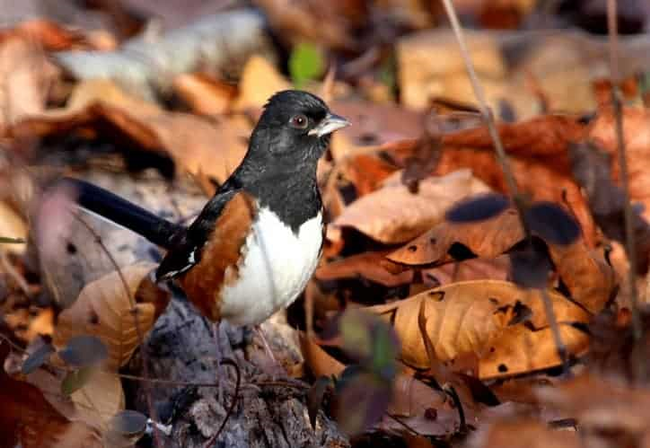
Numerous bird species such as robins and towhees forage in the leaf layer searching for insects and other invertebrates to eat.
Raking up leaves and putting them in the trash could have the unintended consequence of removing some of next year's garden butterflies and moths, many of which are pollinators. Most butterflies and moths overwinter in the landscape as an egg, caterpillar, chrysalis, or adult. In all but the warmest climates, they often use leaf litter for winter cover. Fritillaries and wooly bear caterpillars will tuck themselves into a pile of leaves for protection from cold weather and predators. Some Hairstreaks lay their eggs on fallen oak leaves, which become the first food of the caterpillars when they emerge. Swallowtail butterflies disguise their cocoons and chrysalises as dried leaves, blending in with the “real” leaves.
Bumble bees also rely on leaf litter for protection. At the end of summer, mated queen bumble bees burrow an inch or two into the earth to hibernate for winter. An extra thick layer of leaves is welcome protection from the elements.
All of which makes leaf litter an integral part of a complex web of life.
What You Can Do
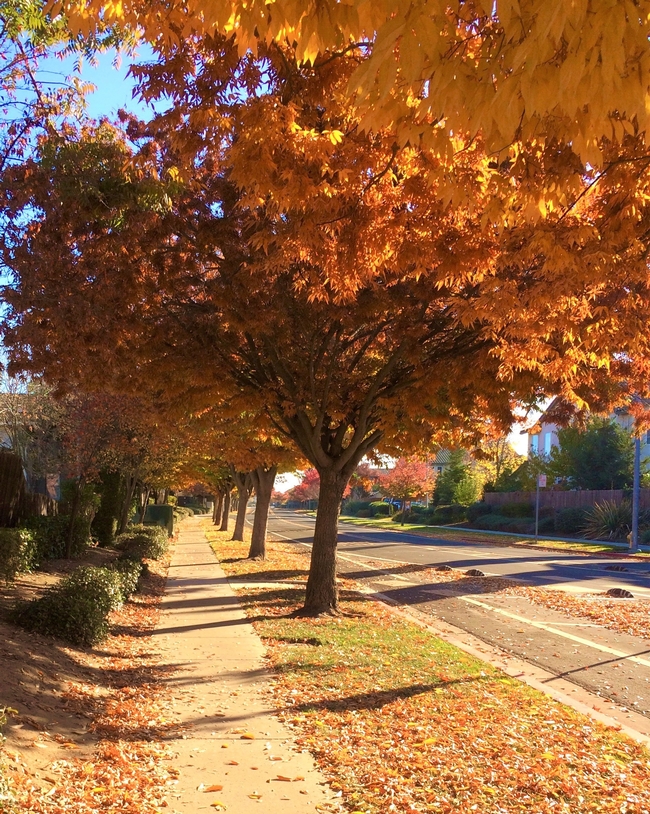
Composting leaves is a terrific way to recycle and create a nutrient-rich garden soil amendment at the same time. Some gardeners opt for shredding their fall leaves for use in compost piles. Like people who mulch their lawn leaves with a mower, consider leaving some leaves undisturbed in garden beds and lawn edges. If space allows, you could create a leaf pile, allowing it to break down naturally, or add the leaves gradually to your compost pile over time. Such efforts will keep leaf litter critters safe and allow you to benefit from the rich garden gift that falls from the trees above.
While it is ideal to “leave the leaves” permanently—for the benefits mentioned above—if you do decide you need to clean your garden and remove the leaves in spring, try to wait until later in the season, so as to give the critters that have been protected by fallen leaves over the winter time to emerge and depart.
Some gardeners may be concerned that autumn leaves, matted down by rain or snow, could have a negative impact on their perennials. However, a thick layer of leaves provides additional insulation against chilly weather and protects newly planted perennials from frost which could damage tender roots and shoots. Anyone who has spotted fragile spring seedlings popping up in the woods knows that all but the most fragile of plants will erupt through the leaf litter in spring without trouble.
So, leave the leaves. While you can't perfectly emulate a forest, your garden will be healthier and more diversified, you'll help support a vast array of wildlife, and you'll reduce the strain on landfills.
Denise Godbout-Avant has been a UCCE Stanislaus County Master Gardener since July 2020.
- Author: Anne E Schellman
If you've ever felt confused by the process of composting, you are not alone! Most gardeners experience confusion at some point over the following topics:
What can I compost?
- Kitchen: fruit and vegetable scraps, tea bags, coffee grounds, and eggshells.
- Yard waste: grass clippings (except Bermudagrass), leaves, pine needles, and shredded wood chips.
- Rotted manures from non-meat-eating animals are allowed, but not necessary.
What shouldn't I compost?
- Avoid animal products (meat, bones, fish, grease, dairy).
- Ashes from the fireplace or BBQ (can cause pH imbalance in soil).
- Sawdust from treated wood.
- Dirt: this ends up making it heavy and too hard to turn.
- Avoid diseased plants.
- Most weeds.
What are “greens” and “browns” and why does it matter?
Greens are rich with nitrogen, and browns contain carbon. Don't get bogged down by reading about the ratios of how much of each to use. Bottom line? You need to add equal amounts of greens and browns. The easiest way to do this is by using two 5-gallon buckets.
Greens examples
Vegetable & fruit scraps, grass clippings, coffee grounds, and rotted manures.
Browns examples
Dry leaves, straw, sawdust, wood chips, corn stalks, cardboard, and paper.
Composting Tips
Make sure all items added to the pile are chopped or shredded to at least 1 ½” in size. Otherwise they won't break down equally. The best size for a pile is 3x3 to 3x5.
For more information including what compost system to choose, which compost method to use, how often to turn your pile, pests, troubleshooting, and a general demystification of the composting process, watch our Composting Basics presentation! You can download the handout on our Classes and Workshops page. https://ucanr.edu/sites/stancountymg/Classes/

